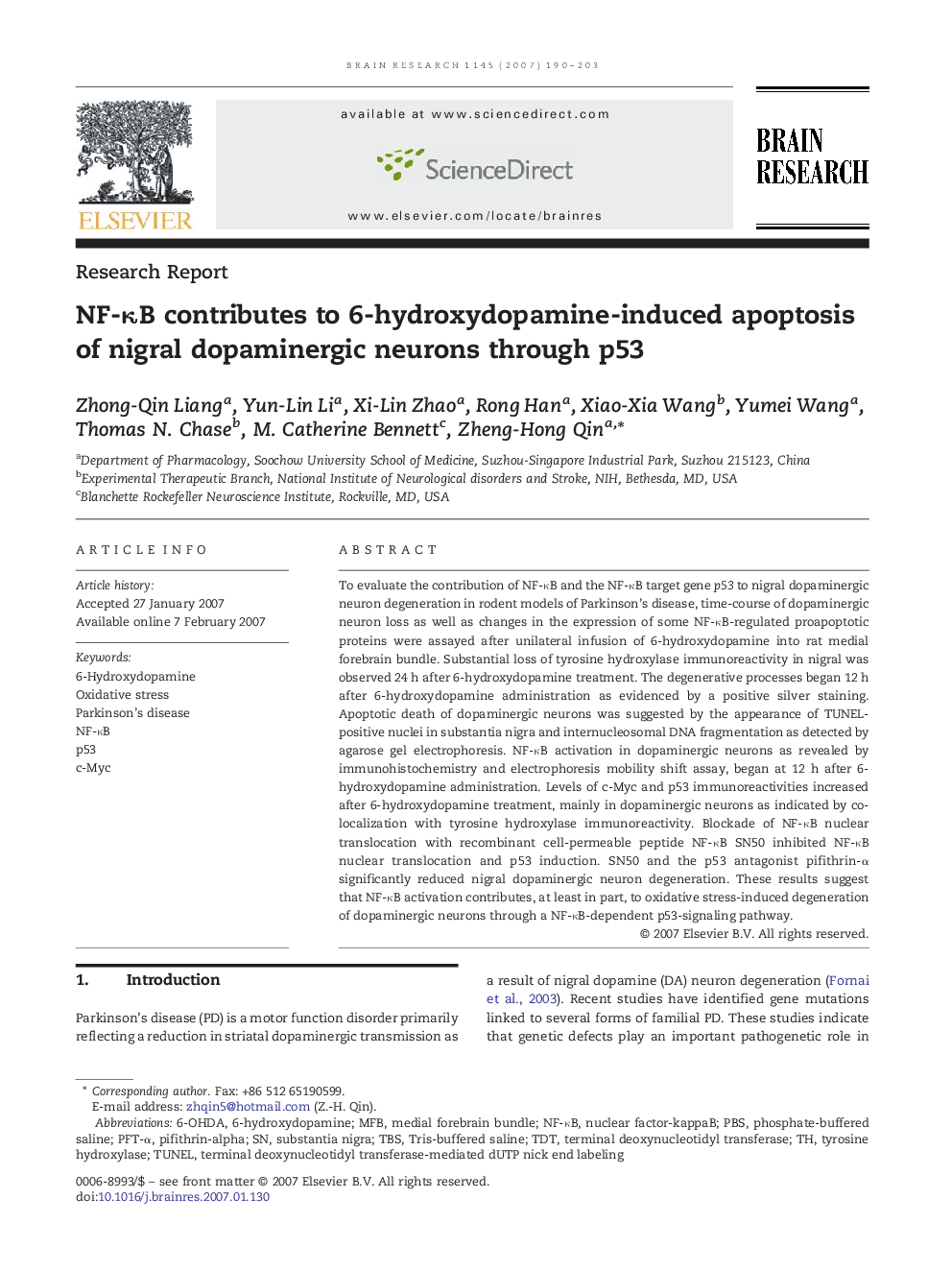| Article ID | Journal | Published Year | Pages | File Type |
|---|---|---|---|---|
| 4331371 | Brain Research | 2007 | 14 Pages |
To evaluate the contribution of NF-κB and the NF-κB target gene p53 to nigral dopaminergic neuron degeneration in rodent models of Parkinson's disease, time-course of dopaminergic neuron loss as well as changes in the expression of some NF-κB-regulated proapoptotic proteins were assayed after unilateral infusion of 6-hydroxydopamine into rat medial forebrain bundle. Substantial loss of tyrosine hydroxylase immunoreactivity in nigral was observed 24 h after 6-hydroxydopamine treatment. The degenerative processes began 12 h after 6-hydroxydopamine administration as evidenced by a positive silver staining. Apoptotic death of dopaminergic neurons was suggested by the appearance of TUNEL-positive nuclei in substantia nigra and internucleosomal DNA fragmentation as detected by agarose gel electrophoresis. NF-κB activation in dopaminergic neurons as revealed by immunohistochemistry and electrophoresis mobility shift assay, began at 12 h after 6-hydroxydopamine administration. Levels of c-Myc and p53 immunoreactivities increased after 6-hydroxydopamine treatment, mainly in dopaminergic neurons as indicated by co-localization with tyrosine hydroxylase immunoreactivity. Blockade of NF-κB nuclear translocation with recombinant cell-permeable peptide NF-κB SN50 inhibited NF-κB nuclear translocation and p53 induction. SN50 and the p53 antagonist pifithrin-α significantly reduced nigral dopaminergic neuron degeneration. These results suggest that NF-κB activation contributes, at least in part, to oxidative stress-induced degeneration of dopaminergic neurons through a NF-κB-dependent p53-signaling pathway.
